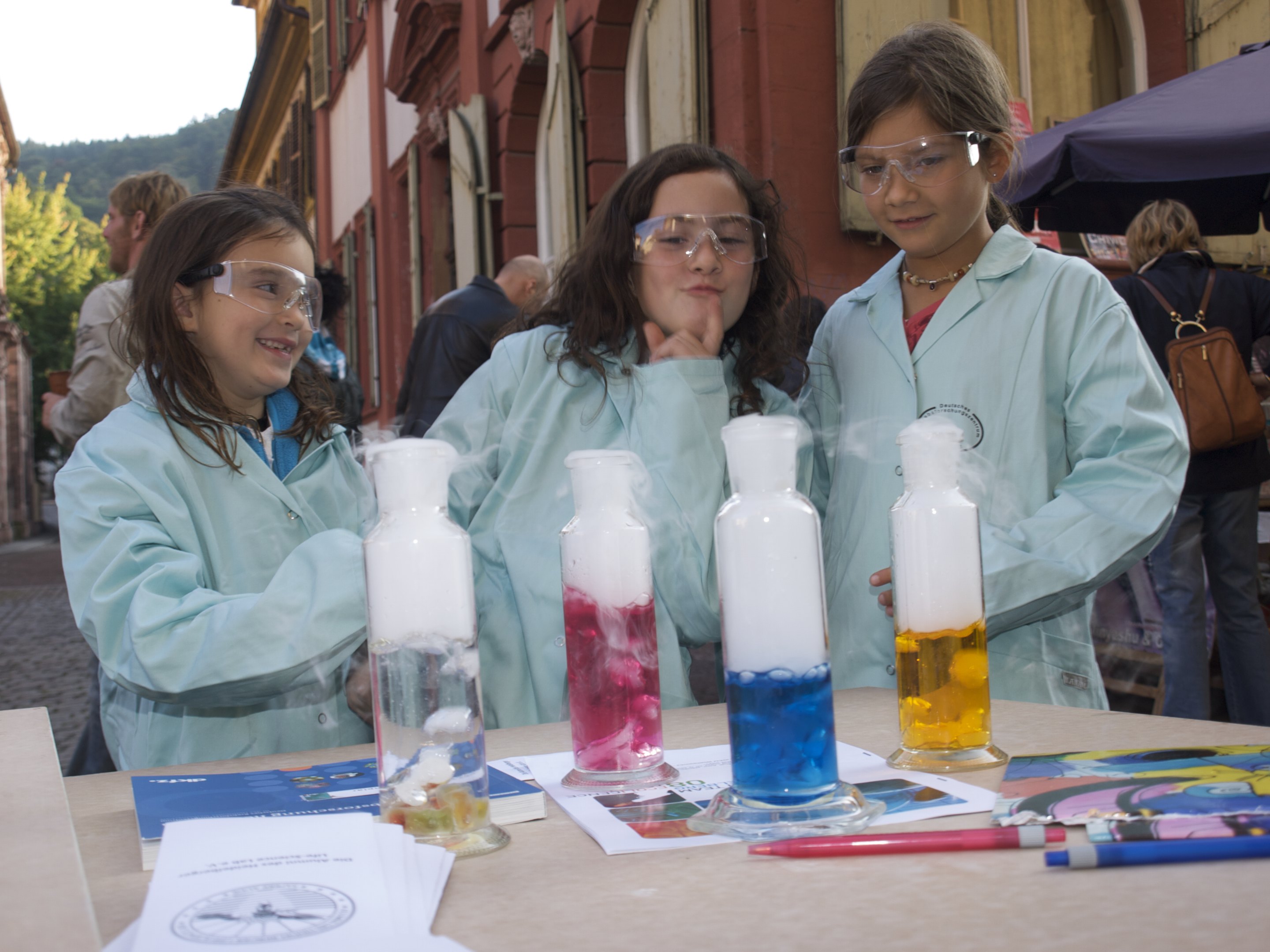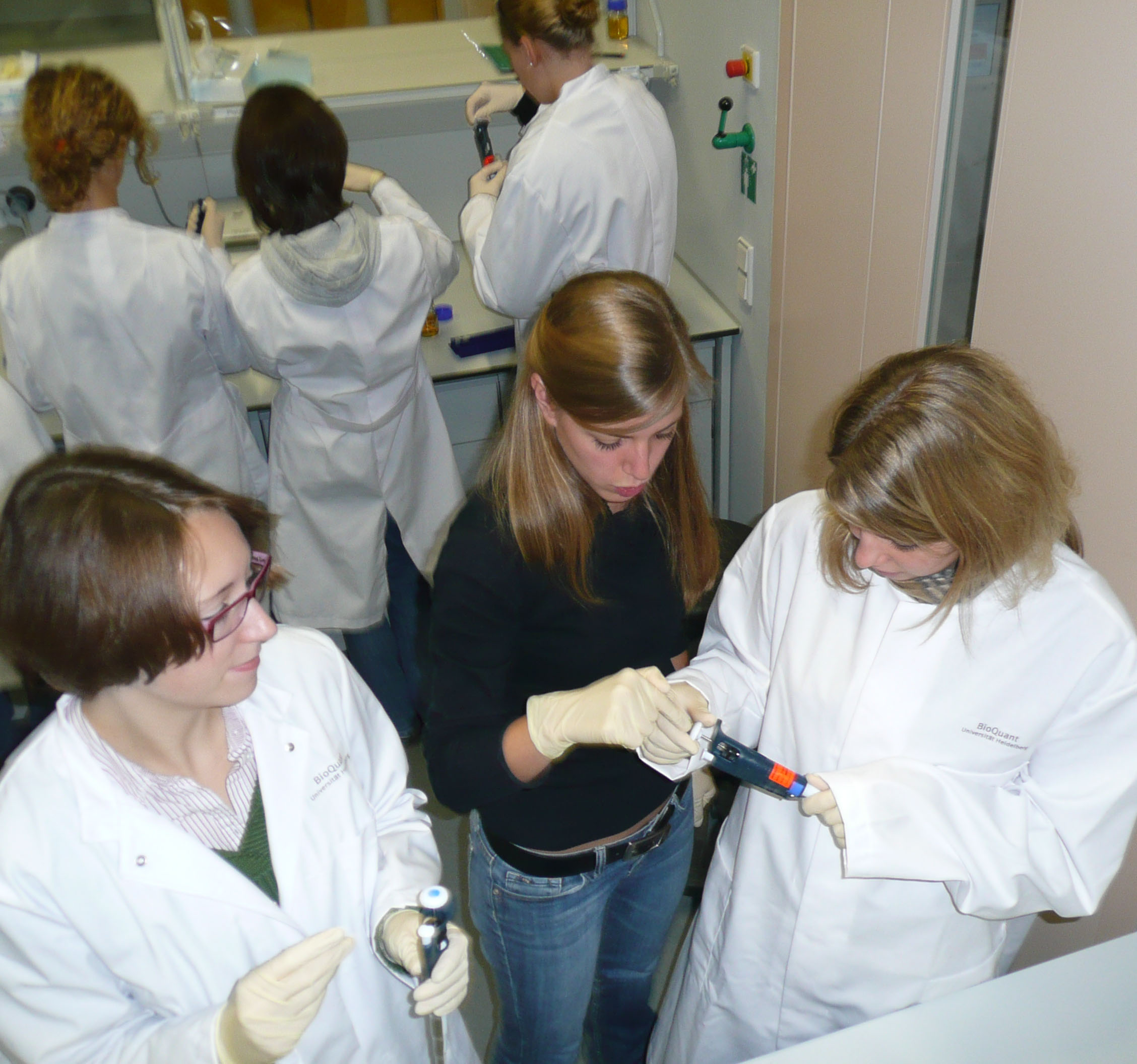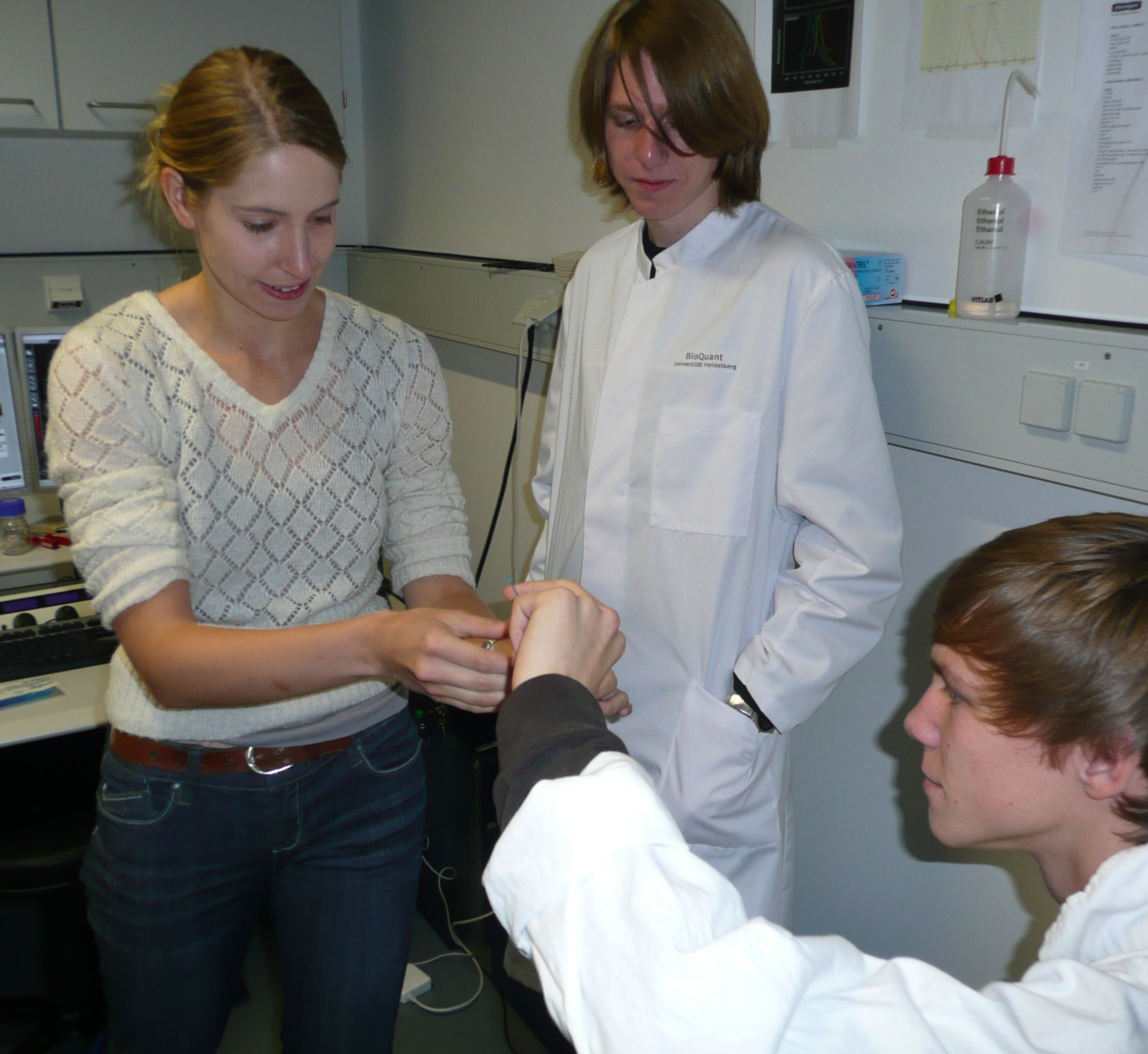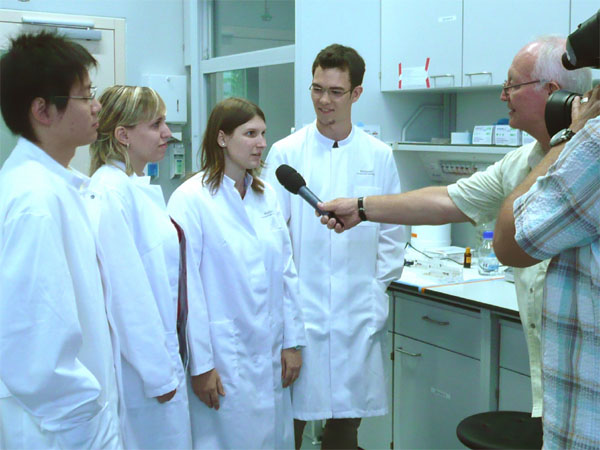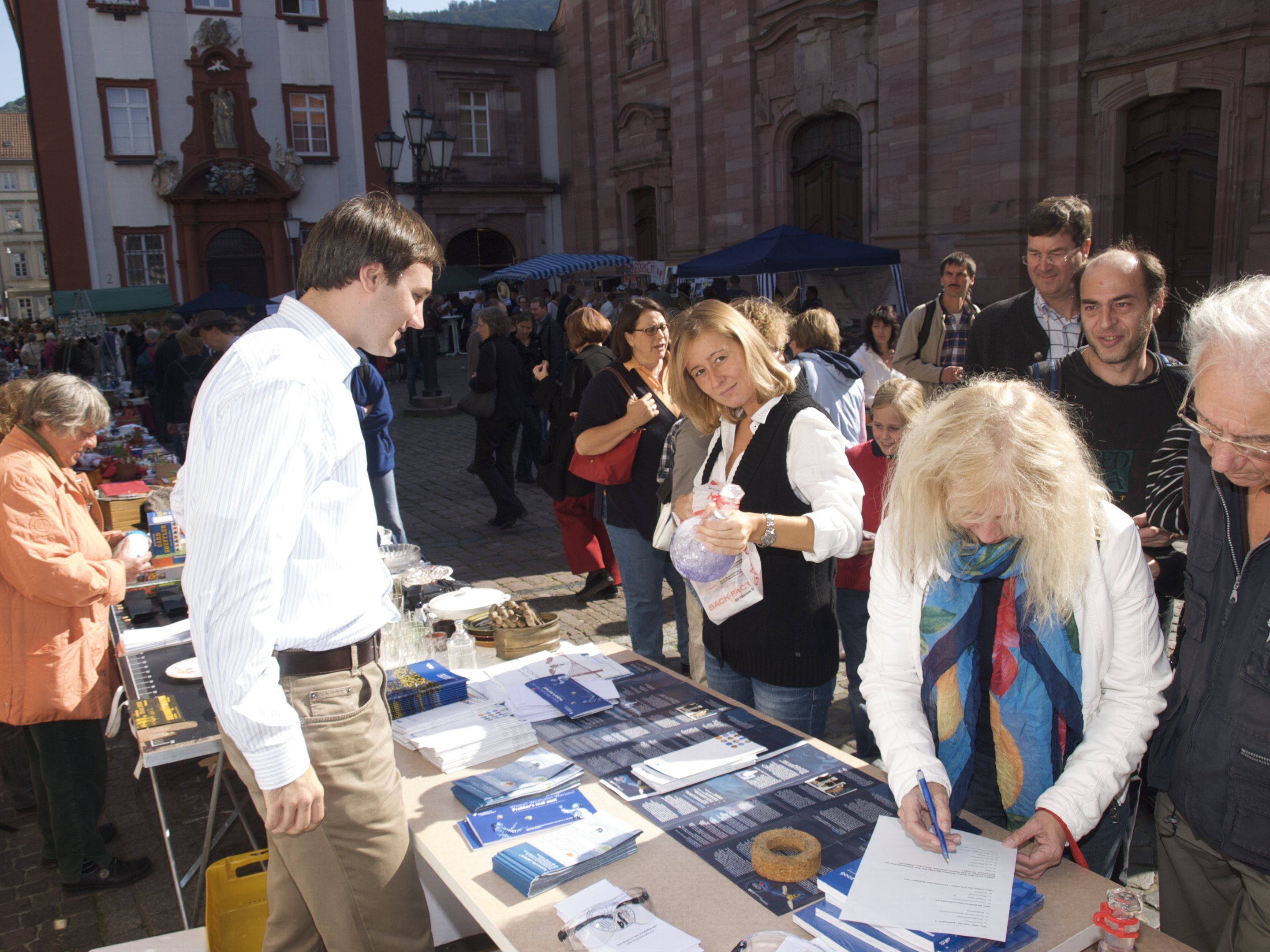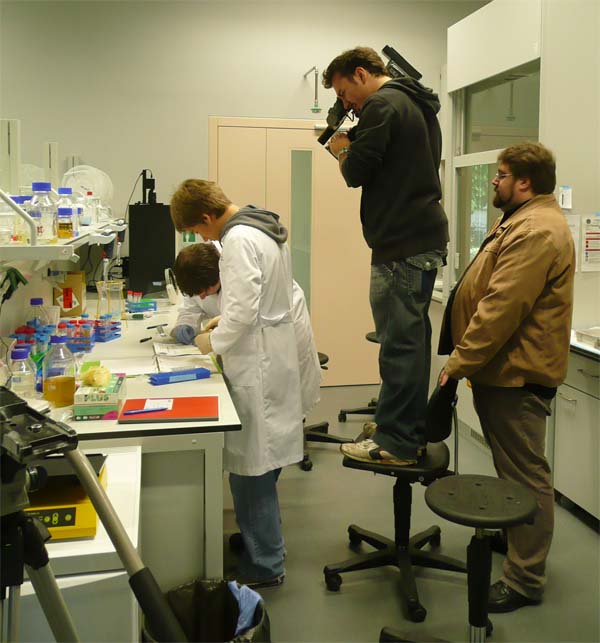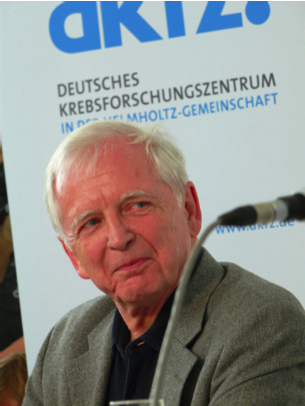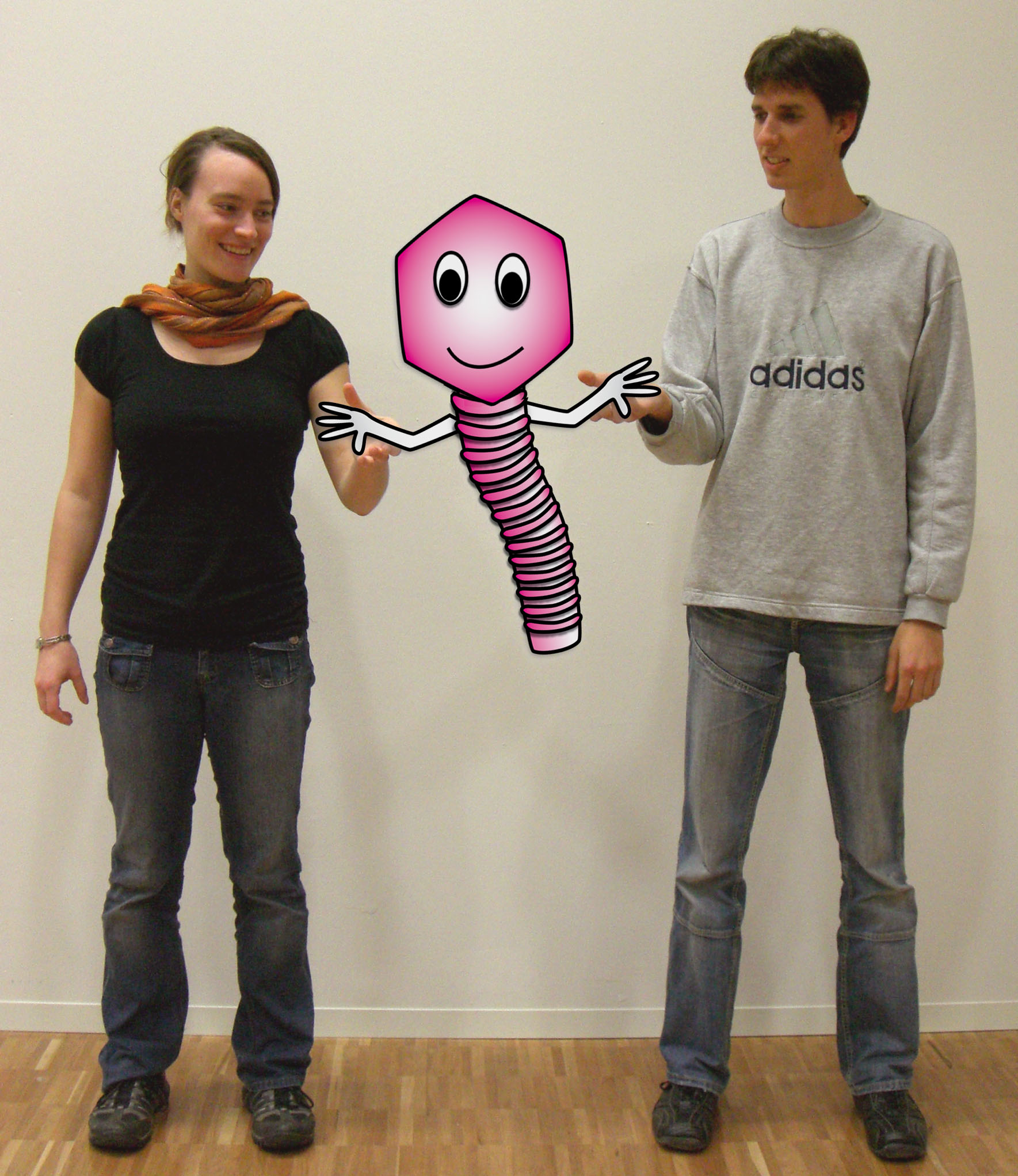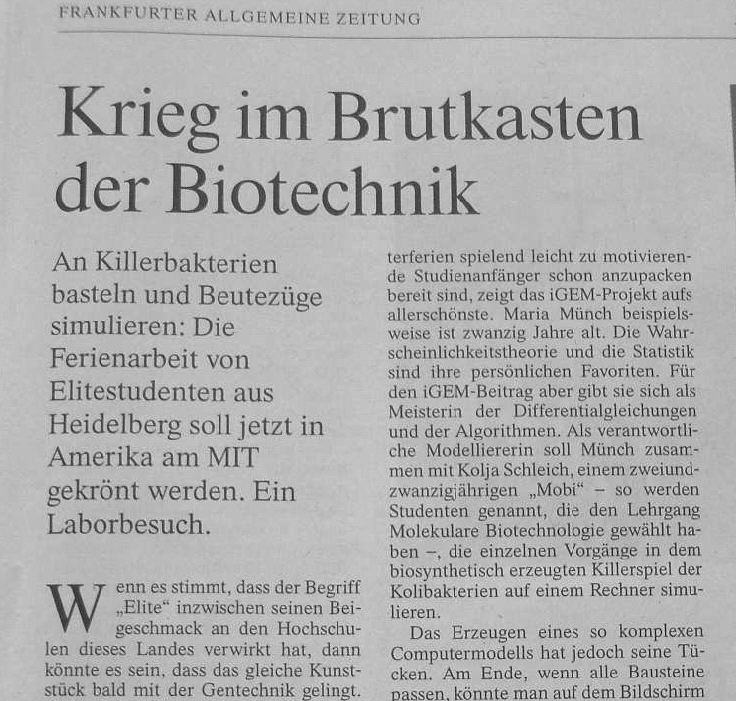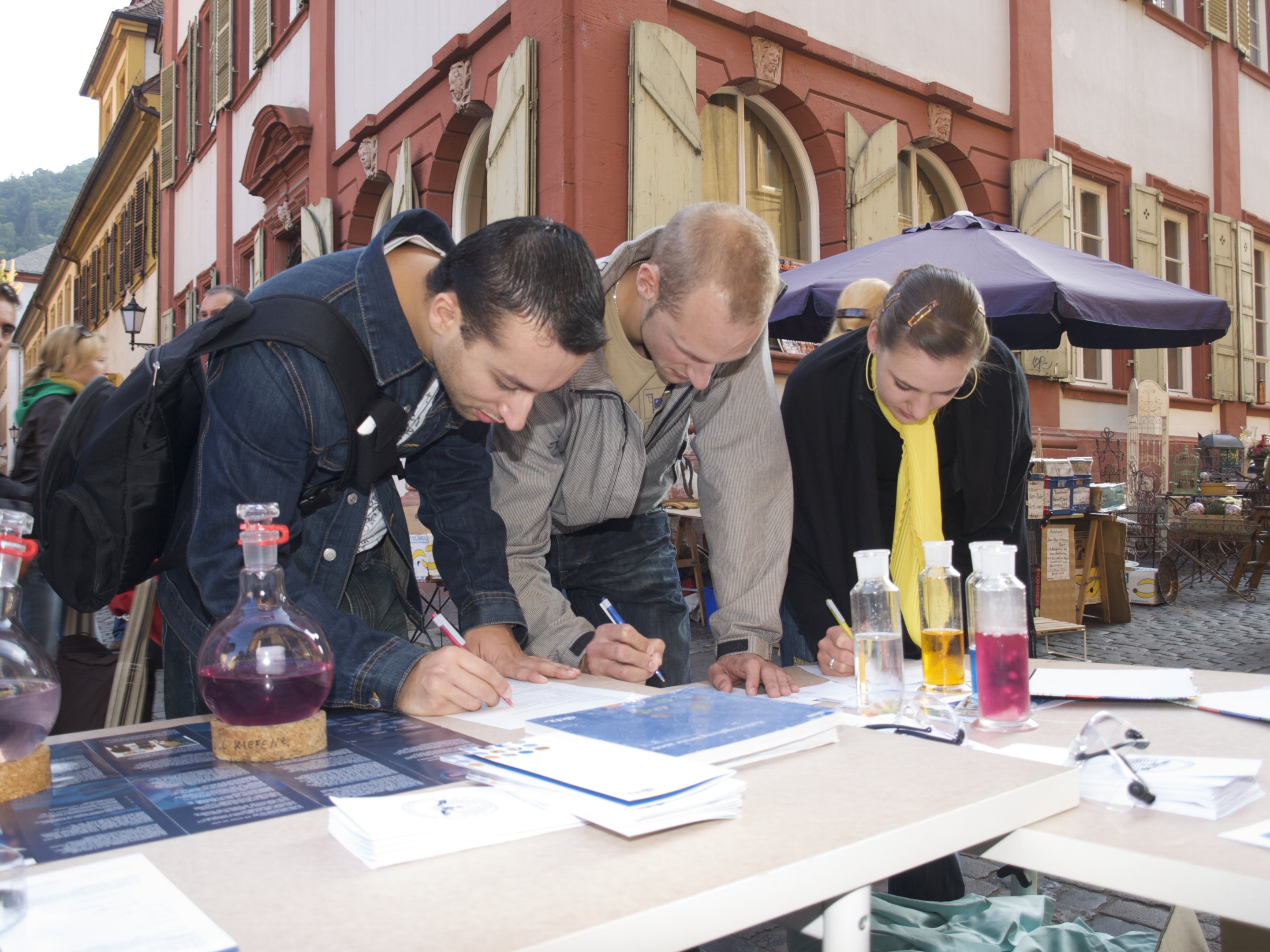Team:Heidelberg/Human Practice/Project Overview
From 2008.igem.org


Human Practice - Science CommunicationThe TeamThis project was set up mainly by two students of the Heidelberg iGEM team, who felt the need to communicate the work of the iGEM team in the context of synthetic biology. Additionally to the wet lab work for the main project, they put all their remaining time and ressources into the buildup of this science communication platform. The science communication team was highly supported by the advisor Jan Eufinger. And last but not least there have to be mentioned all the members of our iGEM team, who supported us with ideas and help and without whom we would never have been able to carry out events like the public survey and the Open Day. The IdeaSynthetic Biology is a very young and dynamic scientific field. And as most modern scientific fields, synthetic biology offers many chances in solving actual problems. But on the other hand- and we want to communicate that quite clearly here- synthetic biology also comprises risks. The same risks that every modern science entains. Profound and detailed analyses of the ethical aspects concerning synthetic biology can be found on the following pages of other iGEM teams (TUDelft, Calgary, KULeuven). In our opinion, there is an important step before ethical considerations of synthetic biology can be made by the public or by policy makers: They first have to know about synthetic biology, have to understand this new research area and therefore have to understand the basics of molecular and cell biology. And this step is where our project is involved. "Only a well-informed public is able to develop a non-prejudiced and profound opinion about synthetic biology." From the past we learned, that modern bioscience is not always accepted and fully integrated in the public interest. A good examle is the public view on green biotechnolgy in Germany and Europe. Many people in Germany are afraid of eating genetically manipulated food, although most do not even know the difference between genetically manipulated food and normal food. And a real problem arises when nescience about the scientific backround is added to this scepsis. The combination of nescience and scepsis is the sward of Damocles of every new, upcoming scientific field, such as green biotechnology once was, because this combination in many cases leads to fear and by that to non-acceptance in the society. And this is what green biotechnology has to battle every single day. "Science can only work successful and develop useful inventions if it is based on a high level of acceptance in the society." A non-acceptance of synthetic biology by the public could lead to a retarding of the advance of synthetic biology and possibly to the non-development of many useful inventions.
Our project is organized around the idea that only a well-informed public is able to develop a non-prejudiced and profound opinion about synthetic biology, which will be the basis for a healthy development of the relations between science and public. Therefore we worked on the following levels: [back] The EssayAt first we developed a concept, how we wanted to enable a good, non-frightening, but honest and informing way of science communication. Read the Essay here
The SurveysSecond, we carried out an information- and survey day to investigate the opinion non-scientists on science communication and synthetic biology- so that we would know where the weaknesses in science communication are. Therefore we surveyed about 100 people from different intellectual and cultural backrounds in the Heidelberg pedestrian area. To determine the opinion of scientist on science communication we surveyed in addition about 80 scientist (PhD students, post docs and professors) of the BioQuant and the German Cancer Research Center. That gave us the starting point of our practical work. Here you can find additional information and the evaluation of the public survey and the evaltuation of the scientist- survey. We also had the great opportunity to get to know the opinion of a Nobel Prize winner about science communication. This year's Nobel prize winner in Medicine, Prof. zur Hausen, kindly gave us an interview on this topic!
Information, Honesty and close Contact to the publicThird, and that was the most important part of the project, we wanted to practice a way of science communication based on our antecedent research and theoretical work, which would at the end lead to a close contact and a close exchange between our scientific work on the iGEM project and the public. The aim of this practical approach was to inform the public and by that prevent upcoming unsubstantional fear and scepsis and give to the public the knowledge necessary to built a substantional opinion on the upcoming field of synthetic biology. The three bases of science communication are in our opinon: [back] Media WorkTo realise that we had a close collaboration with one of the most well-known newspapers in Germany: The Frankfurter Allgemeine Zeitung (FAZ). In addition we had close contact to the TV stations Campus-TV Heidelberg and Prometheus TV as well as good contact to the DKFZ institute press. Furthermore the radio station Ruperto Carola and the DKFZ, BioQuant and University Press-Devisions wrote articles concerning synthetic biology, our iGEM Team and the ongoing project work. Get an impression of our Media Work here
[back] The Open DayAdditionally, we organized an Open Day where we invited pubils from different schools and introduced them theoretically and practically in the world of biobricks and synthetic biology. You can find an instruction for an open day as well as a report on our open day. Get information and material of our open day here [back] The Phips the Phage PortalLast, but not at all least, we constructed a portal on the wiki called Phips the Phage where we present our project and synthetic biology in general to interested people without a deep biological background-knowledge. The idea of this portal is to develop a virtual guide (Phips) who guides the public through our project and adds relevant information every time when necessary- so even pupils should be able to understand what we did during the summer. With Phips the Phage, the iGEM wiki for the first time served as a platform to provide background information on synthetic biology and not only the scientific details. The concept we follow with this approach is not very frequently practiced, you could call it risky, we prefer to call it bold: We aim to integrate the information for non-scientists into the information for scientists, because we do not want to seperate the public from our research - not even from the documentation of our research. But since we know that most of the scientific details will not be understood by non-scientists, we have to provide background information. We organized the arrangement of this information in way that somebody who is interested in reading our project descripton, but does not understand everything at first, can directly follow the links to the Phips the Phage page and can find the information he/she needs to understand most of the scientific part. So the optimal way of using our internet portal would be from scientific information to background information and back to scientific information again - now with the chance to really understand the documentation of our project. We can not say it enough times: Only with a profound understanding somebody can build his/her own opinion. And this is what we want to enable interested non-scientists to do. Therefore, in our opinion, it is not enough to give some information clearly put together for non-scientists. Because as we said, we want to be honest. And one can get the best and purest impression of our scientific work in directly reading the documentation of it. Of course, everybody is free to pick the information he/she is interested in from what we provide - but at least we want to give everybody the chance to get as much and as pure and honest information as possible. [back] The Phips the Phage Portal is divided into three sections: We already tested the portal on the opening day and got very postive feed-back from the pupils. You can follow-up the Phips the Phage guiding tour ... follow Phips (step 1)
ConclusionsWe enriched our portal with many graphics explaining the content of the articles additionally. Unfortunately, there may be images, which cannot be viewed by all browsers. Mozilla Firefox 3.0 is able to show them all. [http://www.mozilla-europe.org/de/firefox/ Download Mozilla Firefox 3.0 here] |
 "
"

